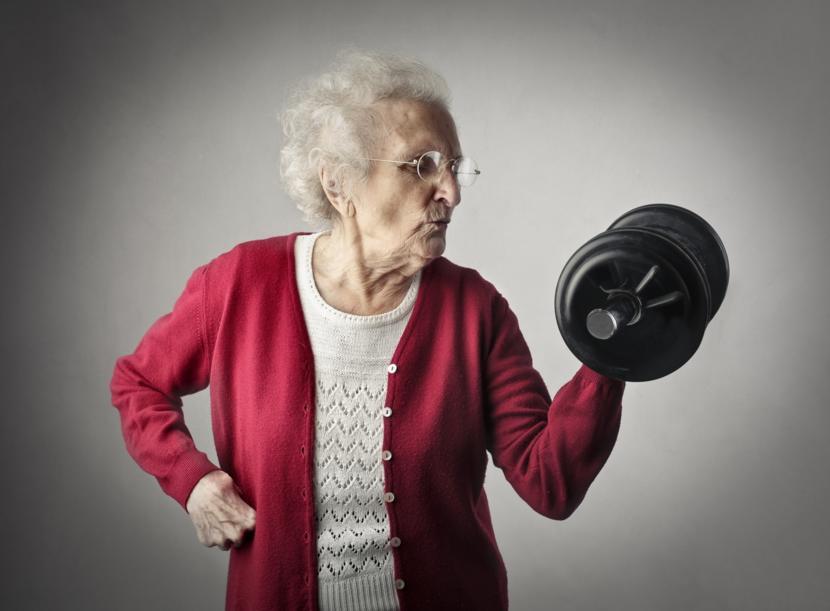
When strolling through your gym after an aerobics class, do you slow down outside of the weight room? Maybe peer in looking to see if anyone lifting weights looks like you? If anyone is lifting weights the size of soup cans not the size of your car.
Does this sound like you?
Hitting the weight room can be intimidating at any age! Especially for seniors who have never incorporated strength training into their workout routines. But, don’t sweat it! Optimal Sports Physical Therapy is here to help guide seniors on how to make strength training safe and effective.
Strength Training for Seniors
As our bodies age, our muscles begin to shrink and lose mass. Our muscles also lose elasticity and recover more slowly from physical exercise. Strength training can help seniors counteract the natural effects aging has on muscles. Research shows that strength training can even help to reverse some symptoms of chronic diseases like sarcopenia and osteoporosis.
If your workout does not include strength training, you may be missing out. Strength training may be the proverbial fountain of youth. Not only does strength training help ward off age-related muscle loss, but it can also increase mobility, and keep your bones strong. Seniors who incorporate strength training activities into their workout routines can see improvements in balance, falls risk, and mental health.
Benefits of Strength Training for Seniors
Many seniors are already aware that regular aerobic activity is important. Aerobic activity helps to keep their bodies toned and maintains the strength of the heart and lungs as they age. This may include activities such as swimming, walking, or cycling. But, many seniors do not take advantage of the benefits that strength training offers them. Among the many benefits, strength training can:
Reduce Symptoms of Age-Related Diseases
Research indicates that all adults will begin to experience muscle loss after the age of 40. The extent of muscle loss depends on a number of factors. Factors can include genetics, diet, smoking and alcohol use, and physical activity level.
The majority of age-related muscle loss is from the inactivity of the muscles. Strength training can reverse much of this muscle loss. While also easing the symptoms associated with several age-related diseases.
Strengthen Bones
Strength training helps to build muscle mass and adds more weight to the body. The increased muscle mass stimulates the bones to strengthen and grow. Increased bone strength can lower a senior’s risk of developing osteoporosis or reduce the symptoms of the disease.
Strengthen Core Muscles
Strength training can help to build the muscles in the trunk of the body including the abs, chest, and back. Core strength in seniors is directly related to balance, ability to complete normal activities of daily living, and decreased falls risk.
Ease Joint Pain
Joint pain and discomfort are common with age. Many seniors may struggle with arthritis. Although strength training cannot reverse arthritis, it can help to alleviate the symptoms. Strength training helps to build muscle, tendon, and ligament strength that surround joints. This added strength leads to ease in discomfort associated with arthritis.
Help Improve and Maintain Mental Wellbeing
There is evidence that strength training can help people sleep better, improve mood, and help older adults live independently. These factors can lead to maintaining or improving your mental health.
Is strength training safe for seniors?
Both research and clinical experience indicate that strength training is safe for seniors. This includes seniors who take part in regular physical activity. Seniors who may have an age-related disease. And seniors that are frail and do not take part in regular physical activity. An individualized strength training program can help seniors develop good form while ensuring their safety during the workout.
Can strength training help seniors with Sarcopenia or Osteoporosis?
Although strength training cannot eliminate sarcopenia or osteoporosis, it can help to improve overall strength, muscle mass, and muscle quality. These improvements can help to delay the disease onset. And can improve the symptoms of both sarcopenia and osteoporosis.
Tips for Beginning a Strength Training Program for Seniors
If you are new to strength training, do not be intimidated by all the equipment at your gym. Strength training can be done using your own body weight, resistance training, and weight training. Here are some tips from Optimal Sports Physical Therapist Dr. Chris Shafer to help you get started:
- Start Small. Instead of worrying about jumping right in with weights, start small. This might be the lowest weight or using your own body’s resistance to get started. It takes time to build up strength. Try to perform three sets of eight to 12 reps focusing on having good form before you move to a heavier weight.
- Aim for three to four times per week. You do not need to include strength training exercises every day to see the benefits. Try to include strength training exercises just three to four times per week.
- Muscle soreness is not a bad thing. As we age our muscles take more time to recover from physical activity. Know that you may be sore for a couple of days. And, spacing your workouts out throughout the week can help. Remember, you may be sore, but you should not feel pain with strength training.
Strength Training Exercises for Seniors
Strength training will help improve your everyday life. It can help with tasks like climbing stairs, carrying shopping bags, or playing with your grandkids. As you become stronger you can increase the exercises, sets, and frequency in which you work out.
Metadata: Gain practical advice from Optimal Sports Physical Therapist Dr. Chris Shafer for starting a strength training program for seniors
